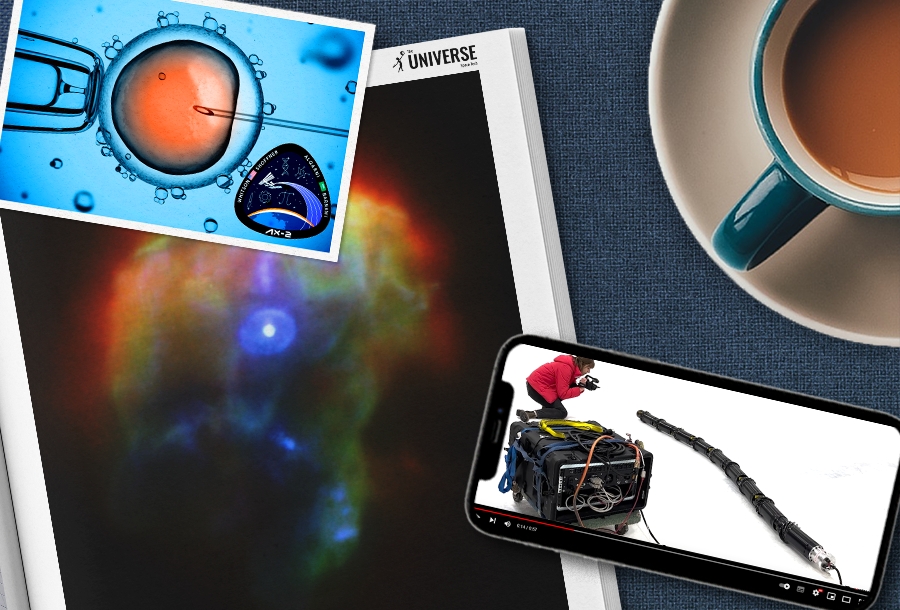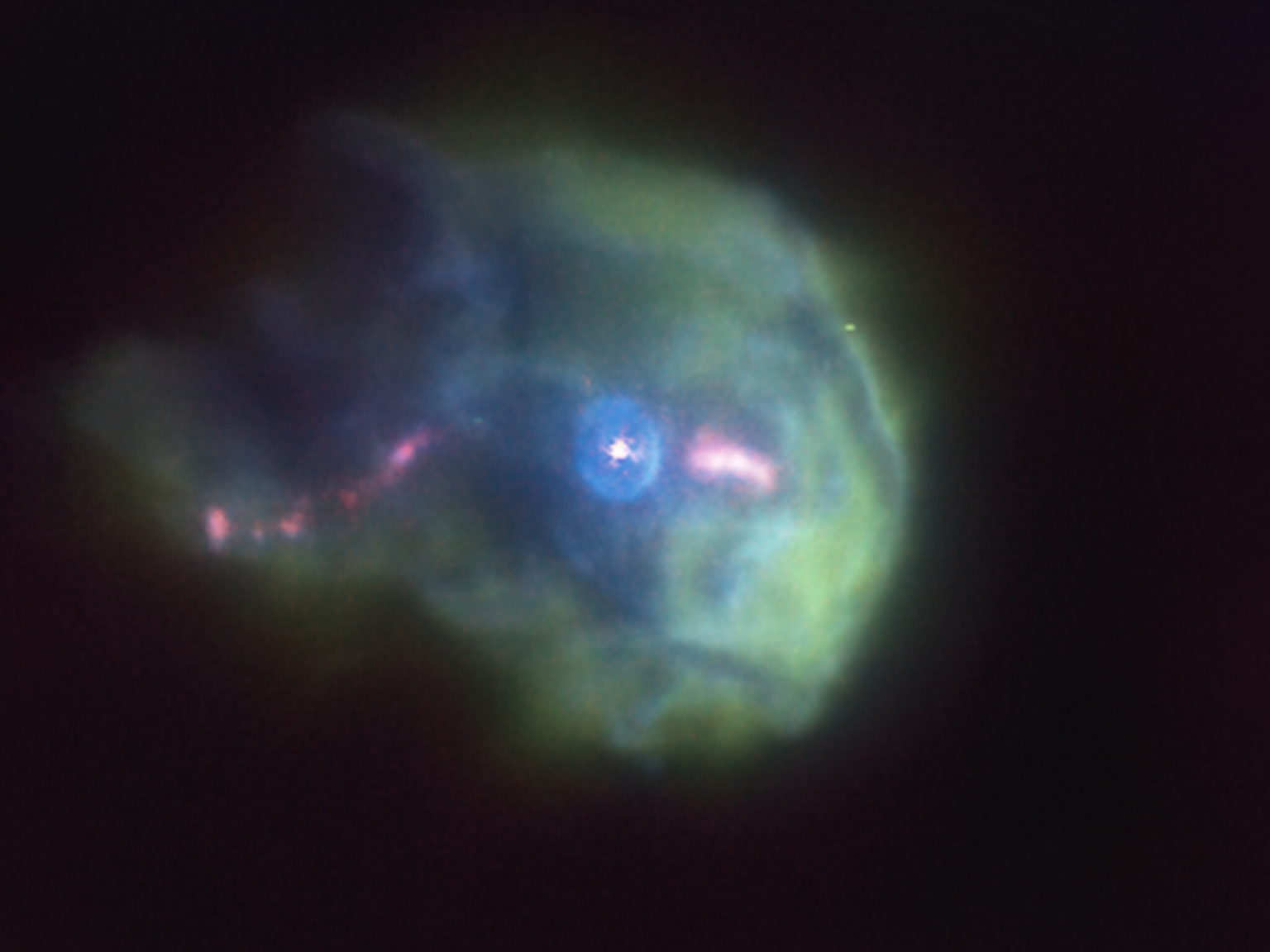Selection of the most interesting space news for the week: NASA wants to use lasers for communication in a lunar mission; Virgin Galactic will resume tourist flights into space, and we tell interesting facts about Jupiter’s moon Io and why JUICE will study it from afar.

“We don’t want to conquer the cosmos, we simply want to extend the boundaries of Earth to the frontiers of the cosmos.”
― Stanisław Lem, Solaris
Orion spacecraft will “shoot” lasers during the flight to the Moon
NASA’s Artemis II mission is scheduled for 2024, if there are no delays. It will be an outstanding flight not only because it will include a crew of four astronauts who have visited the orbit of the Moon for the first time since 1972, but also because it will use laser “shots” as an improved method of communication between spacecraft.
Previously, NASA relied on radio signals to transmit any scientific data from the probes to Earth. However, lasers have the ability to significantly increase the amount of transmitted data that spacecraft can send to Earth. NASA is ready to test this technology from the vicinity of the Moon. The technology was named Orion Artemis II Optical Communications System (O2O).
Private mission to grow stem cells in orbit for the first time
Astronauts of the private Ax-2 mission, which starts at the end of May, will try to grow stem cells in space for the first time. The latter are capable of turning into cells of any type, so they are indispensable for the treatment of many diseases. Perhaps it is in orbit that they will be able to get enough of them.
The work will be conducted under the guidance of the Cedars-Sinai Institute of Regenerative Medicine. Its representatives will arrive at the cosmodrome a week before the launch and will bring samples with them. The mission will last a week, but it will lay the foundation for future long-term stem cell research in zero gravity. Pluripotent stem cells usually exist in the human embryo at a certain stage of its existence. They are able to transform into three main types of cells from which the human body is built. These cells then differentiate further to form different cells and organs.
NASA shows a snake robot to explore planets: Video
The NASA team from the Jet Propulsion Laboratory (JPL) has demonstrated to the world the latest version of its snake robot EELS (short for Exobiology Extant Life Surveyor). NASA engineers have been developing the robot for three years and during this time have created several prototypes of varying degrees of success. The main goal of the project is to create a bot capable of coping with a diverse type of terrain that is unattainable for wheeled robots such as Perseverance and Curiosity, which are currently exploring Mars.
The latest version of EELS weighs about 100 kilograms, has a length of 4 meters and consists of 48 small engines. Tests in sandy, snowy and icy environments confirm that its 10 rotating segments are able to move, as well as move on various types of surfaces that are inaccessible to wheels. This means that the adaptive robot will be able to overcome wavy sand, slippery ice, sharp rocks, steep cliffs of craters, and even crawl into underground lava tubes.
Virgin Galactic to resume tourist flights to space in June
The company of billionaire Richard Branson, who recently visited Ukraine, is preparing to launch tourist suborbital flights. Representatives of Virgin Galactic announced this on Monday, May 8. They plan to finally end the break that has been going on for almost two years.
Initially, the Unity 25 mission is due to take place at the end of May. This, in fact, will be a test flight, during which the company’s employees will be on board. During it, the spacecraft will rise to a height of 80 km and prove that it is ready to transport tourists. The total travel time is 90 minutes, while passengers feel weightlessness in the cabin of a space plane for several minutes. Virgin flights will launch from the spaceport of America in New Mexico.
No evidence found: Ex-head of Roscosmos does not believe in the landing of astronauts on the Moon
The former head of the Russian space corporation Roscosmos, Dmitry Rogozin, has once again proved his incredible degree of incompetence. The ex-chairman, who was dismissed from the post of director of the country’s space program last year, now uses Telegram, where he likes to dive into conspiracy theories. Recently, he questioned the fact that NASA landed a dozen astronauts on the Moon more than half a century ago during the Apollo program. Ars Technica reports.
According to his publication, Rogozin asked Roscosmos to provide him with “documentary evidence of the Americans’ stay on the Moon”. According to him, despite all the efforts, being the head of the agency, he did not find any evidence. Even cosmonaut Alexei Leonov’s comments about the reality of the NASA mission, he simply ridiculed.
Photo of the week

The Very Large Telescope (VLT) of the European Southern Observatory (ESO) in northern Chile has made the clearest image of a stellar object called 244-440. A strange digital name was given to a young star located in the Orion nebula at a distance of 1,350 light-years from Earth. The peculiarity of the object is that it throws a powerful jet of matter into space, like a garden hose.
Interesting figure — 276 days

The secret Chinese space plane that launched from the Jiuquan Cosmodrome on August 4, 2022, has finally returned to Earth. According to a short message from the Xinhua news agency, on May 8 of this year, it landed on a runway specially equipped at the same cosmodrome. This time, the mission of the Chinese shuttle lasted 276 days. Like the previous one, it was top secret — Chinese officials did not disclose any of its details. We still don’t know what this spacecraft looks like, and instead of its name, the designation CSSHQ is most often used.
Something to read on the weekend

The JUICE spacecraft, which set off on a journey to Jupiter, will study closely three large moons of the giant planet: Europa, Ganymede, and Callisto. But the large moon Io, which is closest to the gas giant, will be observed from a distance. We tell you more about Io and why JUICE will look at it from afar.
While creating a base on the Moon or Mars, it may be necessary to extract resources on site, and not to deliver them from Earth. Microbial mining technology can help solve this problem. The use of microorganisms for mining is commonplace on Earth. Today, 20% of the world’s copper is mined with their participation. We tell you whether such technology can be used in extraterrestrial conditions.
Follow us on Twitter to get the most interesting space news in time
https://twitter.com/ust_magazine

